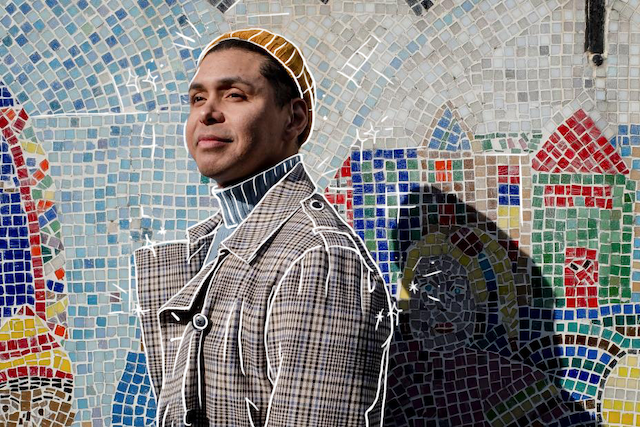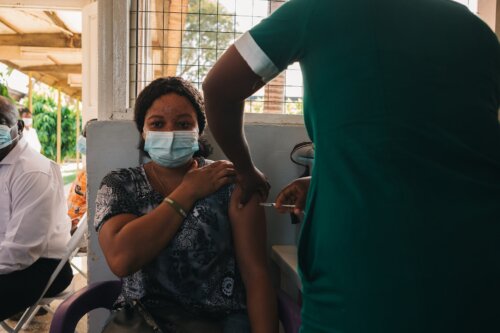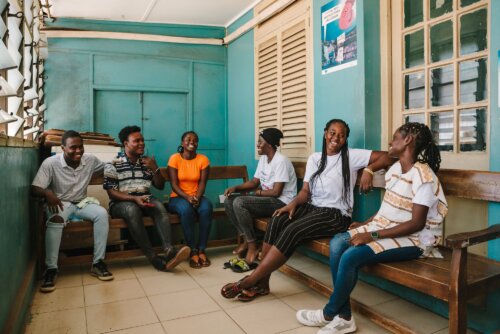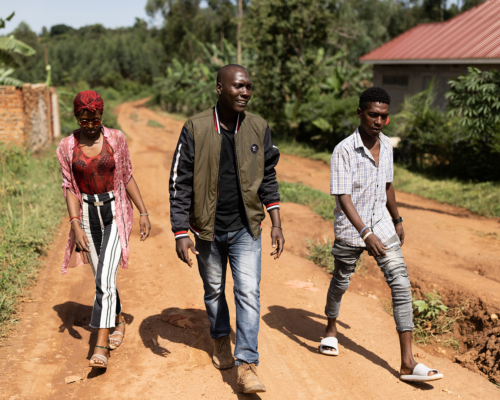Is There a Cure For HIV/AIDS?
Thanks to developments from doctors, scientists, and researchers, the world is inching closer and closer to finding a cure for HIV/AIDS. But is there actually a cure? The answer isn’t a simple yes or no. Here’s what you need to know about the “cure” for HIV/AIDS:
The Real Status on the “Cure”
Let’s be clear on what the latest cases of reported “cures” mean. Scientists are careful to describe the current “cure” as “long term viral remission,” meaning that the HIV virus has been reduced to such low levels in the body that it can’t be detected. The patients currently reported as “cured” are off antiretroviral treatment (ARVs) and not experiencing any symptoms.

The Berlin Patient
Talk of the first known, sustained cure started with Timothy Brown, known as the “Berlin Patient.”
Brown was diagnosed with HIV in 1995, and in 2007, his HIV went into remission after undergoing a bone marrow stem cell transplant.
Prior to his transplant, Brown had been diagnosed with leukemia. His body wasn’t responding to aggressive chemotherapy, so his doctor came up with the novel idea to swap his vulnerable tissue with healthy stem cells from a donor carrying a rare genetic mutation (called CCR5-delta 32) that blocks HIV infection. Only a very small population of the world has this mutation.
After doctors found the right donor with this mutation, Brown received the transplant and then stopped taking his ARV medication. Brown was observed to see if his HIV would resurge, and after a year, his doctor deemed him HIV-free.
Up until he passed away from unrelated recurring Leukemia in September 2020, Brown remained off HIV treatment and continued to show no signs of the virus.

The London Patient
Over the next decade, similar attempts to replicate Brown’s results failed—that was until Adam Castillejo, then known only as the “London Patient,” in 2019.
Castillejo was diagnosed with HIV in 2003 and then with advanced Hodgkin’s lymphoma in 2012. Like Brown, his body resisted chemotherapy, and as a result, his doctors recommended a stem cell transplant from a donor with the CCR5 mutation, which was conducted in 2016.
After observing him for 18 months, scientists declared Castillejo to be HIV-free.
The CRISPR Method
Flash forward a few months to July 2019, when researchers announced another major breakthrough. Scientists from Temple University and the University of Nebraska Medical Center were able to successfully eliminate HIV in living mice for the first time using a super form of antiretroviral therapy, called LASER, and a gene-editing technology known as CRISPR. These results proved that removing HIV in living animals is in fact possible.
Scientists have yet to successfully replicate this approach on humans living with HIV, but results from a September 2019 trial indicated that these edited cells can survive in the human body—another important step toward using gene editing to cure human diseases.
The New York Patient
In February 2022, an American research team announced that a third person, the first-ever woman and first-ever person of mixed race, had been cured of HIV. Like the Berlin Patient and London Patient, the “New York Patient” was cured while receiving a stem cell transplant to treat cancer from a donor with the CCR5 mutation. However, this time, researchers used a new transplant method involving umbilical cord blood cells from a partially matched donor—instead of the usual practice of finding a bone marrow donor of similar race and ethnicity to the patient’s.
The patient stopped taking ARVs about 3 years after the transplant, and more than 14 months after discontinuing ARVs, her blood tests showed no signs of HIV. The fact that this patient is a woman and a person of color is important to the field of study since both identities have been previously excluded from HIV cure trials.
What It All Means
All of these results are incredibly hopeful. They show that new approaches to HIV treatment are becoming increasingly effective and that researchers are slowly getting closer to finding a true cure.
That being said, it’s important to remember that the successes of the Berlin patient, London patient, and New York patient occurred under very special circumstances. The procedures were intended to treat cancer, and they came with a large price tag and an even larger risk. After the Berlin Patient, many of the attempts to replicate his treatment ended with the virus coming back, or with HIV+ patients dying from their cancer. Brown himself almost died immediately following his procedure because of the toll it took on his immune system.
In terms of the major developments using the CRISPR method, gene editing is still a very new technology. While eliminating HIV in mice was certainly a major feat, we’re still a while away from being able to safely use the CRISPR method on humans.
These discoveries also do not change the current situation for most of the 38 million people currently living with HIV, the majority of whom are in sub-Saharan Africa. Roughly a quarter of all people living with HIV still lack access to daily HIV medication despite them now being safe and lower cost.
The dangerous and costly procedures that resulted in patients being cured are not yet a realistic solution to the AIDS pandemic, as promising as the results may be.
We should applaud these groundbreaking discoveries, but we’re not at the finish line yet.
This is why the Global Fund, the organization that receives the money generated by (RED) partners, is so important. While the medical community continues to work on finding a safe, cost-effective cure for HIV/AIDS, Global Fund programs in over 100 countries are focused on scaling up access to daily antiretroviral medication—the current, closest thing to a cure for people living with HIV. These programs also provide prevention services, care, treatment and education to the people most affected by HIV, which are crucial to limiting the spread of the virus.
Given the devastating impact of the COVID pandemic on the fight to end AIDS, supporting the Global Fund is more crucial now than ever before. Join (RED) and help ensure those living with HIV can continue to access essential programs and services.
Originally Posted May 2019


